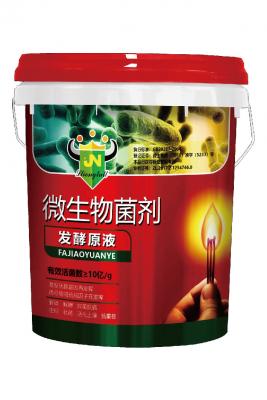What is microbial fertilizer
Although we directly deal with the land of most farmers and know that bio-organic fertilizers and bio-fertilizers are a good thing, many people cannot distinguish the functions and effects of bio-organic fertilizers and bio-fertilizers, and even the difference between the two is not clear, not only buying blindly , Blindly used, and often unqualified by many unfavorable agricultural businessmen to buy unqualified fake and shoddy products, such as buying expired or unqualified fertilizers with bacterial content, buying immature bio-organic fertilizers, direct flushing of bio-fertilizers, bio-fertilizers or single bio-fertilizers use etc.
What is microbial fertilizer?
The so-called microbial fertilizer, simply put, is the use of fertilizers to reproduce the living activities of active microorganisms, promote the absorption of certain specific nutrients in the soil, or inhibit the reproduction of harmful microorganisms in the soil through the release of certain hormones by beneficial microorganisms (more stubborn, can be read twice). Microbial fertilizer is a new type of fertilizer product that has emerged after the 21st century. Its research and development are closely related to the principles of plant nutrition, soil micro-ecology, and modern organic agriculture. It is a new type of bio-fertilizer that is green, environmentally friendly, and purely natural.
Microbial fertilizers can be applied to virtually all crops and most soil types if the environment is right. After the use of microbial fertilizers in the soil, it can increase the number and activity of various beneficial microorganisms in the soil, thereby activating the loose soil, preventing soil hardening, and adjusting soil pH. On the one hand, the degradation of soil sulfur metal residues can improve the root soil environment, Promote the decomposition, transformation and release of nutrients, improve the utilization rate of fertilizers, promote the absorption of plant roots, improve the insulation performance of soil moisture and fertilizers, and improve the ability of crops to resist cold, drought and disease. Reduce and inhibit the reproduction of harmful microorganisms in the soil, reduce the occurrence of diseases and insect pests, and improve the yield and quality of crops.
The strains or active substances in microbial fertilizers are not allowed to be used arbitrarily, and must meet the national standards for the implementation of microbial fertilizers. Although there are many registered strains, the commonly used bacterial fertilizers and bacteria are mainly Bacillus subtilis, Bacillus colloid, Bacillus licheniformis, Bacillus megaterium, Bacillus amyloliquefaciens, Bacillus subtilis, Streptomyces flavus, Lactobacillus plantarum, Aspergillus, Root nodules, nitrogen-fixing bacteria, phosphorus-soluble bacteria, silicate microorganisms, photosynthetic bacteria, etc. However, different varieties have different functions in soil. We should be flexible in choosing varieties that suit our needs.




